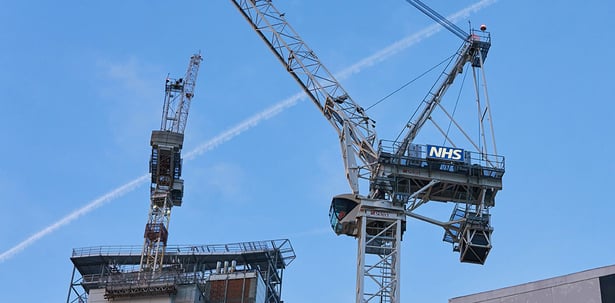Earlier this month we had the pleasure of hosting the Future HealthSpaces Forum where the main theme was “Healthcare Construction – Standardisation is key”.
There were a number of thought-provoking presentations including one from Krystle Drover on behalf of the New Hospital Programme (NHP) who has a 20-year background in engineering. Krystle discussed the merits of categorisation of MMC and commented that there needed to be a conversation between the Client and Supply Chain to establish exactly what the client requires. She went on to discuss programmatic standardisation and how both manufacturer and client need to be more involved in the design and went on to give the following example.
A hospital built in the UK
- The trust decided they wanted all fire-rated doors to be PVC wrapped because of their robustness, giving rise to concerns of higher initial cost.
- However, taking into consideration the higher cost for maintenance and time to reaccredit doors that are not postformed protected plus necessary documentation equals additional costs that far outweigh initial savings over the lifecycle of the doorset.
It was outlined that the NHP programme clearly recognises the value and speed to be delivered from standardisation and are keen to encourage industry innovation to this end. It was said: “As we reduce the number of product designs, wo we can hone innovation to that lesser number!”


Tim Wilkins, Deputy Director of Estates, Epsom and St Helier University Hospital Trust then spoke about the case for change and how standardisation can benefit the patient and impact the cost of running the building. When considered from this viewpoint, operation of the building and lifecycle running costs once completed are key considerations.
This was followed by presentations from Matthew Morris, Ryder Architecture and Paul Johnson, BDP who commented that whilst spaces do inherently need to be flexible, architects should be taking away the pressure on clinical users by standardising as much as possible. During his presentation, Paul commented: “Consider the Duffle coat approach – three different sizes, fit for purpose but fit for all.”
Over recent months, we’ve read several articles and listened to Architects and Estates Managers who are calling out for the standardisation of healthcare building design in an effort to drive down costs and improve the environment for patients, visitors and staff.
As a result, we are actively engaging with the industry, sharing, and voicing our concerns surrounding the future of our much loved healthcare service.
Our R&D team has analysed multiple projects where we are currently engaged, and it soon became evident just how many product and component variations there are within these projects. For example, out of 1450 doorsets, there were 732 product variations. Meaning that an alarming one in two doorsets are completely bespoke.
This exercise highlighted the need for standardisation and change within the industry. As we continue with our analysis, we will investigate how component variation can be minimised whilst maximising product efficiency through correctly specified products with reduced carbon embodiment and lifecycle costs.
Too often we see products that are either under / over specified or just simply not fit for purpose with damaging financial and practical implications. This is why we are collaborating with numerous professionals across the healthcare sector to see how we can help; with our passion for what we do spearheading us to play our part in the drive for a better healthcare service and a future that is both sustainable and repeatable.
To find out more about all of our products, please contact the team today.

